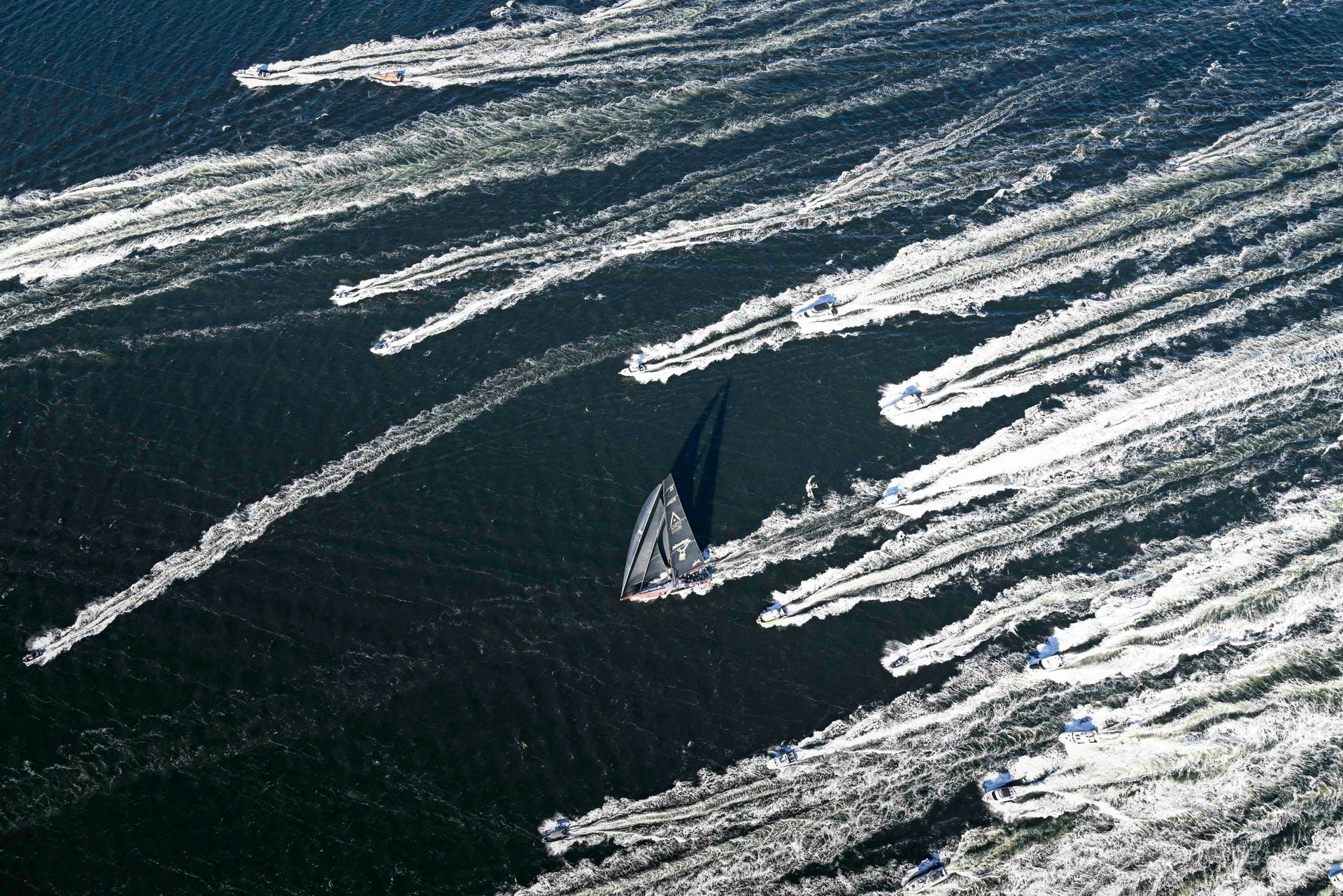CUNNINGHAM INSTRUCTIONS FOR THE NORTH 9DSX MOTH MAINSAIL
THE NORTH SAILS DECKSWEEPER CUNNINGHAM SYSTEM
Alex Hayman and Moth Class Leader Rob Greenhalgh Provide Rigging Instructions for the New 9DSX Decksweeper

The Cunningham system for the new North 9DSX Decksweeper is slightly more complicated than past versions. It is necessary to distribute the load between the main part of the conventional sail (the 3Di blank) and the Decksweeper portion to obtain an ideal sail share. The load-ratio is approximately 65% in the 3Di blank and 35% in the Decksweeper. You achieved this by using a single line system configured as per the description below.
It is not necessary to use all four hooks for the Decksweeper portion, and it’s acceptable to use one hook each side attached to the outside of the sail. Two hooks on each side of the sail add an 8:1 purchase into the Decksweeper, where single hooks each side add 4:1.
The amount of purchase you choose to use on the center purchase running to the main tack of the sail (the 3Di Blank) is your choice; 8:1 or 12:1 centrally and then 2:1 or 4:1 on each Decksweeper panel is recommended.
For reference, Tom Slingsby used: 8:1 in the middle and 2:1 on each Decksweeper panel at the 2019 Moth World Championship in Perth Australia, whereas Robert Greenhalgh used 12:1 in the middle and 4:1 on each Decksweeper panel.
In the system shown below, we use a standard Exocet cunningham system but have added in four Allen a2020shk, two Harken 2698, and one Harken 2158.

The system starts with a 3:1 starting at the lead ring, going down to the double cheek block, then up around the lead ring, and finishing on the double block. You then need to tie two blocks onto the eye straps on the bulkhead and two around the king post loop. Once you have done this, you can pass the rope through all of the blocks, as shown in the photo, using the hook blocks, and then the system is complete.
Once set, the lead ring attaches to the main point at the base of the sail, and then the hooks attach to the webbing loops on the outside and inside of the Decksweeper. Picture 3 shows the system inside the Decksweeper once rigged.









